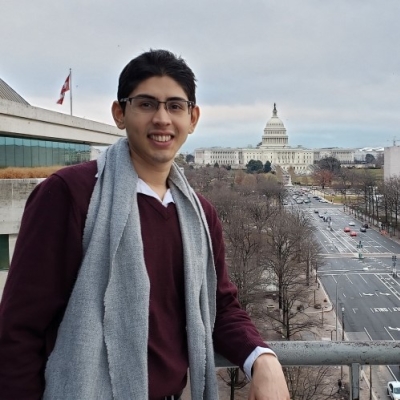We have had a challenging year with news cycles filled with troubling news about the coronavirus, racial injustices, violent rioting, and polarizing elections. But through all this, we have seen people come together and care for one another, such as how teachers drove by in a motorcade to greet their students. Our commentary this year has touched on the heart of many of these topics, reminding Americans to remain hopeful and remain committed to excellence in our schools and to quality education options.
The last two days, we have published a recap of this year’s most popular commentary pieces and of our research. Today, let’s look back at ten of our best blog posts.
1. The chronic condition of American education, by Dale Chu
Although the pandemic exposed weaknesses in our school systems, we would be wise to remember that they have always existed. Dale encourages education reformers not to let the crisis feed into cataclysmic rhetoric that undermines efforts to win people’s hearts, especially when achievement has been stagnant for a while, but reminds us that it’s still important to maintain a proper sense of urgency.
2. David Brooks, please don’t give up on education, by Michael J. Petrilli
In his pessimistic column, Brooks concludes that, because increased college graduation rates are not closing income gaps for Black adults, educational attainment is not the equalizer we hoped it would be. Mike pushes back, however, and argues that controlling for differences in academic skills reveals similar outcomes for Black and White adults. He concludes that “more education might not lead to greater equity, but better education almost certainly will.”
3. How fundamental change happens in America, by Chester E. Finn, Jr.
Everyone hopes that crises will turn into a Sputnik moment that spurs the nation to action to bring transformative change. But for this to happen with our schooling, Checker explains, it requires the combination of successful models, sustained bipartisan leadership, and the most challenging one, a culture shift among parents. When the dust settles on the coronavirus, there will be families who now crave a structural change. Those, he believes, are the ones innovators should focus on.
4. How states can meet the rising demand for school choice, by Dale Chu
With so many parents dissatisfied with the education status quo, what alternatives are or should be available to them? Dale offers his thoughts, including employer-provided early childhood education, letting families enroll children outside their district, and improving access to extracurricular activities for homeschoolers.
5. It’s school culture, stupid, Robert Pondiscio
Wealthier Americans enroll children in private schools on the basis of what values they want their kids to adopt, not their test scores. School culture, Robert explains, is key to student success in the long-run—even reducing criminality rates for at-risk students. While he believes this is a strong argument for giving underserved communities more choice, he also invites reformers to consider how to help schools where poor culture could be worsened if families leave them.
6. Leadership makes a difference: Lamar Alexander and K–12 education, by Chester E. Finn, Jr.
Senator Lamar Alexander will be retiring from his long career of public service. In his honor, Checker writes about his education legacy, from exiting party leadership to focus on passing bipartisan legislation to advancing the Every Student Succeeds Act, and, more recently, a bill to simplify the FAFSA application process. While he will be missed, Checker and other reformers hope he will continue his excellent work from outside Congress.
7. Reopening decisions are mostly a matter of trust, by Michael J. Petrilli
Low-income and parents of color were more afraid than affluent and White peers to send their kids back to schools that tried to reopen. Mike explains that besides being harder hit by the virus, those communities do not trust schools to keep their students safe. He argues that schools should work to do better and build reservoirs of trust to better serve students in the future—and in times of crisis.
8. The lessons that last in the time of pandemic, by Robert Pondiscio
Just as the Depression defined a generation and made it more resilient, writes Robert, the pandemic will define ours. He reflects on the ways in which it has brought people together, such as teachers distributing food or showing up to help a student from outside her porch, and believes children will remember these fondly in their later years.
9. To protect students during the economic downturn, schools need to spend money wisely, by Frederick M. Hess and Brandon L. Wright
The pandemic has heightened the importance of making sound decisions about education finance. Here, the coeditors of Getting the Most Bang for the Education Buck bring together a few lessons from their volume, such as how to use technology smartly, make district budget legislation more flexible, and use parent input to guide decision-making.
10. With his remarks on the murder of George Floyd, Joe Biden showed us how to teach empathy and American history, by Michael J. Petrilli
This has been a challenging year for many Americans, especially for the Black community. Mike, moved by Joe Biden’s words, writes that despite the culture wars and piling injustices, we can still come together as Americans. Mike believes that Biden's speech modeled well how we can teach our history without partisanship and how, through it, we can grieve injustice together and fight for our ideals.
We look forward to 2021, the vaccine, and schools reopening again, and we encourage you to keep following the Flypaper blog for more quality commentary.




